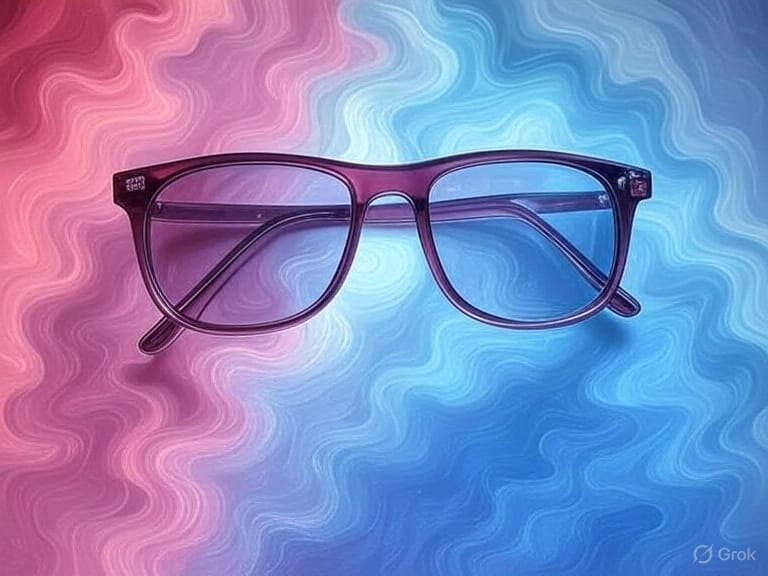Bias Blind Spots
Our brains are wired with bias blind spots that subtly distort our perception of reality, but by actively questioning narratives and diversifying our information sources, we can sharpen our view of the truth.

We all like to think we’re rational, fair-minded people who see the world as it is. But here’s the uncomfortable truth: our brains are wired to trick us. They’re sneaky little storytellers, spinning tales that feel right even when they’re skewed. This isn’t because we’re dumb or lazy—it’s because of something psychologists call bias blind spots, those hidden corners of our mind where objectivity goes to take a nap. In this article, we’re diving deep into the psychology of bias, exploring how it warps what we see, and arming you with simple, practical techniques to cut through the noise and get closer to the truth.
What Are Bias Blind Spots, Anyway?
Imagine you’re wearing tinted glasses without realizing it. Everything you see has a subtle hue—red, blue, green, whatever—but you don’t notice because it’s been that way forever. That’s a bias blind spot in a nutshell: a mental filter you don’t even know is there, coloring how you interpret the world. These aren’t just occasional hiccups; they’re built into how our brains work.
Psychologists like Daniel Kahneman and Amos Tversky have spent decades showing how our minds take shortcuts—called heuristics—to process the flood of information we face every day. These shortcuts are handy for survival (like dodging a speeding car), but they’re lousy for judging complex stuff like news stories or political debates. The kicker? We’re blind to these biases precisely because they feel so natural. We don’t see the tint; we just see the world.
Why Your Brain Loves a Good Slant
So why does your brain fall for slanted stories? It’s not an accident—it’s a feature. Let’s break down a few of the big culprits behind this mental mischief.
Confirmation Bias: The Yes-Man in Your Head
Your brain loves to hear it’s right. Confirmation bias is like a cheerleader that only claps for ideas you already like. When you scroll through your feed and see a headline that matches your worldview—say, “Study Proves Coffee Cures Everything”—you’re more likely to click, nod, and share. Meanwhile, a story saying “Coffee’s Overrated” gets a skeptical side-eye or a quick scroll past. Over time, this creates an echo chamber in your head, where the same old ideas get louder and louder.
Availability Bias: What’s Loudest Feels Truest
Ever notice how a single vivid story—like a shark attack—makes you think sharks are everywhere, even though you’re more likely to choke on a sandwich? That’s availability bias at work. Your brain grabs what’s recent, dramatic, or emotional and decides it’s the whole picture. Media loves this, pumping out sensational headlines that stick in your mind while quieter, more balanced truths fade away.
Anchoring: The First Impression Trap
The first thing you hear about something often sets the tone for everything else. If a friend says, “That new movie’s trash,” you’re primed to spot every flaw when you watch it. Anchoring bias hooks your judgment to that initial take, making it harder to see the full story. News outlets exploit this all the time—drop a loaded lead sentence, and they’ve got you leaning their way before you even finish the article.
How Bias Shapes What You See
These blind spots don’t just mess with random trivia—they shape your entire reality. Take a hot-button issue like climate change or healthcare. Depending on your biases, the same set of facts can look wildly different. One person sees a heatwave as proof of a crisis; another sees it as just weather doing its thing. Neither notices their brain quietly tossing out inconvenient data.
Social media makes this worse. Algorithms feed you content that fits your biases, burying stuff that doesn’t. Before long, your “truth” feels rock-solid because you never see the cracks. And here’s the wild part: even when you know about bias, you still think it’s other people’s problem. Studies—like one from Emily Pronin at Princeton—show we’re great at spotting bias in everyone else but terrible at seeing it in ourselves. It’s the ultimate mental gotcha.
Techniques to Clear the Fog
The good news? You’re not doomed to be your brain’s puppet. While you can’t eliminate bias entirely (sorry, we’re all human), you can outsmart it with a few simple habits. Here’s how to cross-check narratives and sharpen your view of the truth.
Step Outside Your Bubble
If your news diet is all from one flavor—left, right, or whatever—mix it up. Read something from the “other side,” even if it makes you squirm. The goal isn’t to agree; it’s to see what they’re seeing. X is great for this—search a topic and scroll through raw takes from all angles. You’ll spot the slant faster when you compare the extremes.
Ask the Dumb Questions
Channel your inner five-year-old and ask “Why?” a lot. Why does this story matter? Why this angle? Why now? Digging into the “why” forces you to poke holes in the narrative instead of swallowing it whole. If a claim feels too neat—like “This One Trick Fixes Everything”—it’s probably leaning on your biases to sell itself.
Check the Source (and the Source’s Source)
Don’t just trust the headline or the slick website. Who wrote it? What’s their agenda? If it’s a study, who funded it? A quick web search can uncover the backstory—like that “Coffee Cures Everything” piece being bankrolled by a coffee chain. On X, peek at the poster’s profile and past posts. Are they a one-note crusader or a real human with nuance?
Slow Down and Fact-Check
Your brain loves snap judgments, but truth takes time. Before you retweet or rage, hit pause. Look up key claims on a fact-checking site like Snopes or PolitiFact, or just search the web for primary sources. If a story’s screaming “Urgent!” or “Shocking!”—that’s a red flag it’s playing your emotions, not your reason.
Embrace the Gray
Life’s messy, and truth usually isn’t black-and-white. If a narrative feels too tidy—good guys versus bad guys, problem solved in 500 words—your bias blind spot might be lapping it up. Train yourself to sit with uncertainty. The real story’s often in the murky middle.
A Clearer Lens on the World
Bias blind spots aren’t going anywhere—they’re part of the human package. But by understanding how they work and building habits to counter them, you can wrestle back some control. You won’t suddenly become a walking encyclopedia of truth (who has time for that?), but you’ll start seeing the world with less tint and more clarity.
Next time a story hooks you—whether it’s outrage bait or a feel-good win—pause and run it through your bias-busting toolkit. You might be surprised how often your brain’s been feeding you a slant. And in a world drowning in hot takes and half-truths, that extra clarity isn’t just power—it’s freedom.





